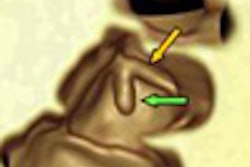Dear CT Insider,
Multidetector CT overcomes a lot of the shortcomings other modalities face in assessing traumatic neurovascular injury. MRI has its speed and availability issues. Duplex sonography is operator-dependent, with blind spots near the skull base.
Still, the high sensitivity of CT angiography (CTA) isn't enough to predict complications and outcomes. In a discussion at Stanford University's 2006 International Symposium on Multidetector-Row CT, neurovascular radiologist Dr. Jay Cinnamon talked about the advances -- and the limitations -- of CTA in the neurovascular trauma setting, along with ways to maximize its clinical utility.
The traditional gold standard modality, catheter angiography, isn't being left out in the cold. New interventional applications are creating plenty of demand for the more invasive imaging procedure. Learn more about CTA for neurovascular trauma in this issue's Insider Exclusive, brought to you before our other AuntMinnie.com members can access it.
Also this week, Dr. David Dowe takes a radiologist-centric view of cardiac CTA in a new turf war feature by AuntMinnie.com staff writer Wayne Forrest. Dr. Dowe offers tips that will be useful to anyone who is imaging the heart with CT.
You'll need contrast for all that CTA, so this might be a good time to catch up on the latest bells and whistles in power injectors. Dr. Dominik Fleischmann from Stanford talks about the impressive features of the new devices, and some contrast timing tricks that can optimize contrast-enhanced CT.
Last but not least, read about how a group of students from the Massachusetts Institute of Technology developed a CT-guided breast biopsy device. Below you'll find these stories and many more, all available for a click in your CT Digital Community.




















